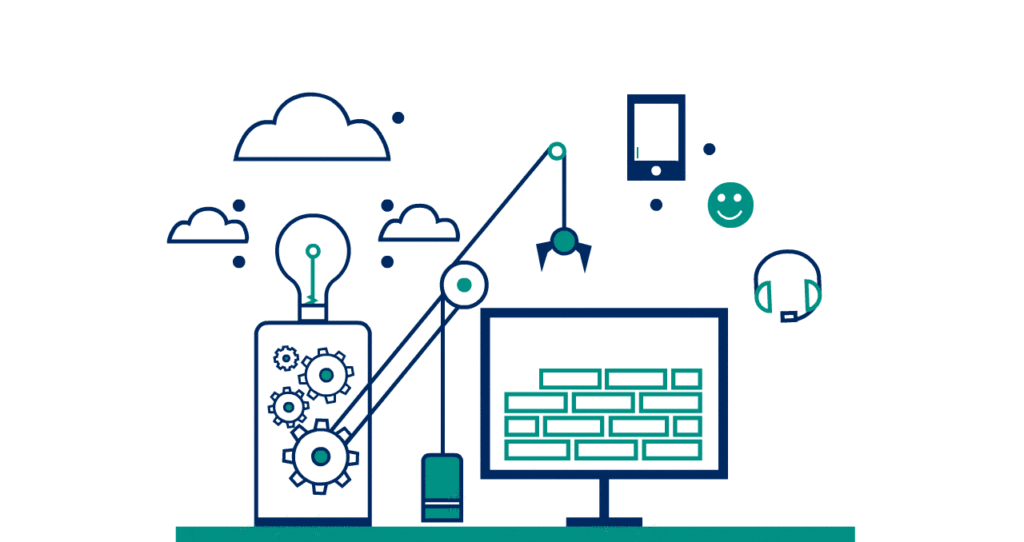Course: GIS Software System (SBEG3583)
Semester II, Session 2023/2024
Lecturer: Dr. Shahabuddin bin Amerudin
The Geographic Information System (GIS) has revolutionized how we analyze and interpret spatial data, providing invaluable insights across various industries. The GIS Software System course (SBEG3583) at UTM, under the guidance of Dr. Shahabuddin bin Amerudin, delves deeply into the development, implementation, and future trends of GIS software. This article explores the key points and topics reviewed in the course, serving as a comprehensive guide for students preparing for their final examination.
Development and Evolution of GIS Software
Evolution of GIS Software
The history of GIS software is marked by significant milestones that have shaped its development and capabilities. Initially, manual mapping techniques formed the basis of spatial analysis, but the advent of computerized mapping systems brought about a paradigm shift. These early systems paved the way for desktop GIS applications, which made spatial tools more accessible and user-friendly. The evolution continued with the emergence of web-based and mobile GIS platforms, significantly expanding the reach and functionality of GIS. Today, advancements such as cloud-based GIS solutions and the integration of the Internet of Things (IoT) have further enhanced data scalability and real-time analysis capabilities, allowing for more sophisticated and dynamic spatial data management.
The initial phases of GIS software development were focused on digitizing and automating the labor-intensive processes of traditional cartography. As technology advanced, so did the capabilities of GIS software. Desktop GIS applications emerged in the 1980s, providing powerful tools for spatial data analysis on personal computers. This democratization of GIS technology allowed a broader range of users to engage with spatial data, fostering innovation and new applications across various fields.
The transition to web-based GIS in the late 1990s and early 2000s marked a significant leap forward, enabling the sharing and analysis of spatial data over the internet. This shift not only enhanced accessibility but also facilitated real-time collaboration and data sharing among multiple users and organizations. Mobile GIS further expanded the horizons of spatial analysis by allowing data collection and analysis in the field, providing real-time updates and insights. The recent integration of cloud-based solutions has brought unprecedented scalability and computational power to GIS, supporting large-scale spatial data analysis and complex modeling tasks. Additionally, the incorporation of IoT devices has enabled real-time data streaming and dynamic updating of spatial datasets, further enhancing the relevance and application of GIS in various sectors.
Fundamental Concepts and Modern Approaches
Understanding the core concepts and modern methodologies in GIS software development is crucial for grasping the subject. Spatial data models, both vector and raster, form the foundation of GIS, representing geographic features and attributes in various formats. Vector models use geometric shapes such as points, lines, and polygons to represent discrete features, while raster models utilize a grid of cells to represent continuous phenomena. These models are essential for accurately depicting and analyzing spatial relationships and patterns.
Geographic data collection methods, including remote sensing and GPS, are essential for gathering accurate spatial data. Remote sensing involves acquiring data about the Earth’s surface using satellite or aerial imagery, while GPS provides precise location data through satellite navigation systems. These techniques enable the collection of large volumes of spatial data, which can be analyzed and visualized using GIS software.
Data analysis and visualization techniques enable the interpretation of complex spatial information, transforming raw data into actionable insights. Techniques such as spatial interpolation, clustering, and network analysis allow for the identification of patterns and trends within spatial datasets. Visualization tools such as thematic maps, 3D models, and interactive dashboards facilitate the communication of spatial information to a broad audience, enhancing decision-making processes.
Modern programming languages and methodologies have also become integral to GIS development. Python, known for its scripting and automation capabilities, is widely used in GIS for tasks ranging from data processing to custom tool creation. Its extensive library ecosystem, including libraries such as ArcPy and GDAL, provides robust support for various GIS functions. JavaScript and HTML5 are crucial for developing interactive web GIS applications, enabling the creation of dynamic maps and spatial data visualizations that can be accessed through web browsers. Agile development and DevOps practices enhance the efficiency and flexibility of GIS projects, ensuring timely and robust software deployment. These methodologies promote iterative development, continuous integration, and collaborative teamwork, leading to the rapid delivery of high-quality GIS solutions.
Current Trends in GIS Software
The integration of Artificial Intelligence (AI) represents a significant trend in the evolution of GIS software. AI-driven predictive modeling, advanced spatial analysis, and real-time decision-making are transforming how spatial data is utilized. Machine learning algorithms can analyze large volumes of spatial data to identify patterns and make predictions, supporting applications such as land use planning, environmental monitoring, and disaster management.
In transportation management, GIS applications like fleet optimization, traffic pattern analysis, and route planning are leveraging AI to enhance efficiency and accuracy. For example, AI algorithms can optimize delivery routes by analyzing traffic conditions, road networks, and delivery schedules, reducing fuel consumption and improving delivery times. Traffic pattern analysis using AI can identify congestion hotspots and suggest measures to alleviate traffic flow, enhancing urban mobility and reducing travel time.
The integration of AI with GIS is also enabling real-time decision-making. For instance, emergency response teams can use AI-powered GIS systems to analyze real-time data from various sources, such as weather forecasts, traffic reports, and social media feeds, to coordinate response efforts during natural disasters. These advancements demonstrate the expanding role of GIS in solving complex, real-world problems, highlighting the importance of staying updated with the latest trends and technologies in the field.
Role of GIS Software Vendors in Driving Innovation
Role of Vendors in Innovation
GIS software vendors play a pivotal role in driving technological advancements and meeting industry-specific needs, particularly in transportation management. Leading vendors such as Esri and QGIS have set benchmarks for innovation, offering comprehensive solutions that address various spatial data challenges. Esri’s ArcGIS platform, for instance, provides a wide range of tools for spatial analysis, data visualization, and application development, supporting various industries such as urban planning, environmental management, and transportation.
QGIS, an open-source alternative, offers flexibility and customization options, enabling users to tailor the software to their specific needs. The continuous development and enhancement of QGIS by a global community of developers ensure that it remains a robust and versatile GIS solution. These vendors not only provide the tools and technologies necessary for effective spatial data analysis but also contribute to the advancement of the field through research, development, and collaboration.
Collaboration in the GIS Industry
Collaboration among vendors, managers, and stakeholders is crucial for the continued development and enhancement of GIS software. Knowledge sharing and collaborative development lead to significant improvements in features and functionalities, ensuring that GIS tools remain relevant and effective. For example, collaborative projects between software vendors and academic institutions often result in innovative solutions that address specific industry challenges.
The GIS industry benefits from partnerships that promote interoperability and data sharing. For instance, initiatives such as the Open Geospatial Consortium (OGC) bring together organizations from various sectors to develop open standards for geospatial data and services. These standards facilitate the integration of different GIS systems and enable seamless data exchange, enhancing the overall utility and impact of GIS technologies.
Competitive Strategies of GIS Vendors
Understanding the competitive strategies of GIS vendors is essential for assessing their market positioning and approaches to evolving transportation demands. Successful strategies often involve a combination of technological innovation, customer-focused solutions, and strategic partnerships. For example, Esri’s strategy of offering a comprehensive suite of GIS tools and services, coupled with extensive training and support, has solidified its position as a market leader.
QGIS, on the other hand, leverages its open-source nature to attract a diverse user base, including academic institutions, government agencies, and non-profit organizations. The flexibility and customizability of QGIS, along with its active user community, contribute to its competitive advantage. Case studies of leading vendors provide valuable insights into how these strategies are implemented and their impact on the industry, highlighting the importance of understanding market dynamics and customer needs.
Comparison of Computer System Architecture Configurations in GIS Software
Types of System Architectures
Different system architectures offer unique advantages and disadvantages, impacting GIS operations and user experience. Desktop GIS provides high performance and offline access but is limited in scalability. It is ideal for individual users or small teams working on localized datasets. Client-server GIS offers centralized data management and multi-user access but is dependent on network connectivity. This architecture is suitable for organizations that require collaborative data editing and management.
Cloud-based GIS solutions provide scalability, accessibility, and reduced costs, although they raise concerns about security and internet dependency. Cloud-based GIS is particularly beneficial for large-scale projects that require significant computational resources and data storage. Mobile-based GIS enables field data collection and real-time updates, but its limited processing power and battery life can be challenging. Mobile GIS is essential for applications that require on-site data collection and immediate analysis, such as environmental monitoring and disaster response.
Impact on Functionality and User Experience
The choice of system architecture significantly affects GIS operations, especially in transportation management. Ensuring data accuracy, real-time updates, and user accessibility are critical factors influenced by the underlying architecture. Desktop GIS systems, while powerful, may not provide the real-time capabilities needed for dynamic applications such as traffic management. Client-server and cloud-based architectures offer better support for real-time data updates and multi-user access, making them more suitable for transportation management tasks.
Each type of architecture must be evaluated for its performance, scalability, and data management capabilities to determine its suitability for specific transportation management activities such as fleet tracking, route optimization, and incident management. For example, cloud-based GIS can support real-time fleet tracking by processing and analyzing large volumes of data from multiple sources, providing timely insights for decision-making.
Performance, Scalability, and Data Management
Analyzing the performance, scalability, and data management capabilities of different system architectures is crucial for their applicability in transportation management. Desktop GIS systems, while capable of handling complex spatial analyses, may struggle with large datasets and real-time data processing. Client-server architectures provide centralized data management, facilitating collaboration and data sharing among multiple users.
Cloud-based GIS solutions offer unparalleled scalability, allowing organizations to expand their data storage and processing capabilities as needed. This architecture is particularly advantageous for transportation management activities that require real-time data analysis and large-scale modeling. Mobile GIS, while limited in processing power, provides essential support for field data collection and real-time updates, ensuring that spatial data is accurate and up-to-date.
Benefits and Limitations of FOSS in GIS Applications
Benefits and Limitations of FOSS
Free and Open Source Software (FOSS) in GIS offers several advantages, including cost-effectiveness, customizability, and community support. These benefits make FOSS an attractive option for many organizations. For instance, the cost savings associated with FOSS can be significant, particularly for small organizations or those with limited budgets. Additionally, the ability to customize FOSS to meet specific needs ensures that users can tailor the software to their unique requirements.
However, potential drawbacks include the lack of official support and integration challenges, which can pose significant hurdles for some users. Organizations adopting FOSS may need to invest in training and development to build the necessary expertise for effective implementation and maintenance. Despite these challenges, the advantages of FOSS, such as the ability to modify source code and the support of an active user community, often outweigh the limitations.
Open Data and Standards
FOSS promotes interoperability and encourages customization and collaboration, which are essential for efficient transportation management. By adhering to open data and standards, organizations can enhance their GIS capabilities and foster a more collaborative environment. Open data initiatives, such as OpenStreetMap, provide valuable spatial data that can be freely accessed and used for various applications. The adoption of open standards, such as those developed by the OGC, ensures that GIS systems can seamlessly integrate and share data, enhancing their overall utility and impact.
Challenges of FOSS Adoption
Adopting FOSS involves challenges such as training and support requirements, data migration issues, and integration with existing infrastructure. Addressing these challenges is crucial for successful implementation and utilization of FOSS in GIS applications. Organizations may need to invest in training programs to build the necessary expertise and ensure that users can effectively leverage the capabilities of FOSS. Data migration issues, such as the transfer of existing datasets to new FOSS platforms, must be carefully managed to avoid data loss or corruption.
Integration with existing infrastructure can also be challenging, particularly for organizations that rely on proprietary GIS solutions. Ensuring that FOSS can seamlessly integrate with other systems and workflows is essential for maximizing its benefits. Despite these challenges, the adoption of FOSS offers significant advantages, including cost savings, flexibility, and community support, making it a viable option for many organizations.
Exploring Advanced GIS Software Concepts and Applications
Build Once, Deploy Anywhere
Ensuring consistency and compatibility across platforms is critical for effective GIS deployment. The “build once, deploy anywhere” approach facilitates the development of applications that work seamlessly across different devices and operating systems. This approach is particularly relevant in the context of web-based and mobile GIS solutions, where applications must function reliably on various platforms.
Developing cross-platform GIS applications ensures that users can access and interact with spatial data regardless of their device or operating system. This flexibility enhances user experience and ensures that GIS tools can be widely adopted and used effectively. Additionally, this approach reduces development time and costs by eliminating the need for multiple versions of the same application.
Web-based vs. Mobile GIS Solutions
Both web-based and mobile GIS solutions have their strengths and challenges. Security measures are critical for protecting sensitive data, while field data collection capabilities are essential for real-time updates. Web-based GIS solutions offer robust data visualization and analysis tools that can be accessed from any internet-enabled device, providing a powerful platform for spatial data analysis and decision-making.
Mobile GIS solutions, on the other hand, are designed for field data collection and real-time updates, providing immediate insights and enhancing decision-making processes. The suitability of each solution depends on the specific needs of transportation management, with each offering distinct advantages for various applications. For instance, web-based GIS is ideal for centralized data management and analysis, while mobile GIS is essential for on-site data collection and real-time reporting.
Integrating Three-Tier Architecture with Cloud-based GIS
Integrating three-tier architecture with cloud-based GIS enhances data sharing, scalability, and security. This integration is particularly beneficial for optimizing transportation systems and operations, providing a robust framework for handling complex spatial data tasks. The three-tier architecture, comprising the presentation, logic, and data tiers, ensures that GIS applications are modular and scalable, facilitating the efficient management of spatial data.
The presentation tier handles user interaction and data visualization, while the logic tier processes data and performs spatial analysis. The data tier manages data storage and retrieval, ensuring that spatial data is accurately maintained and accessible. Integrating this architecture with cloud-based GIS provides additional benefits, such as enhanced scalability and data sharing capabilities. Cloud-based GIS solutions can handle large volumes of spatial data and support real-time analysis, making them ideal for transportation management applications that require dynamic data processing and analysis.
Conclusion
The GIS Software System course (SBEG3583) provides students with a comprehensive understanding of the development, implementation, and future trends in GIS software. By exploring key topics such as the evolution of GIS software, the role of vendors, system architectures, the benefits of FOSS, and advanced GIS concepts, students are well-equipped to navigate the complexities of spatial data analysis and its applications in transportation management.
The course highlights the importance of staying updated with the latest trends and technologies in GIS, emphasizing the need for continuous learning and adaptation. As GIS continues to evolve, it will play an increasingly critical role in addressing complex spatial challenges and driving innovation across various industries.















